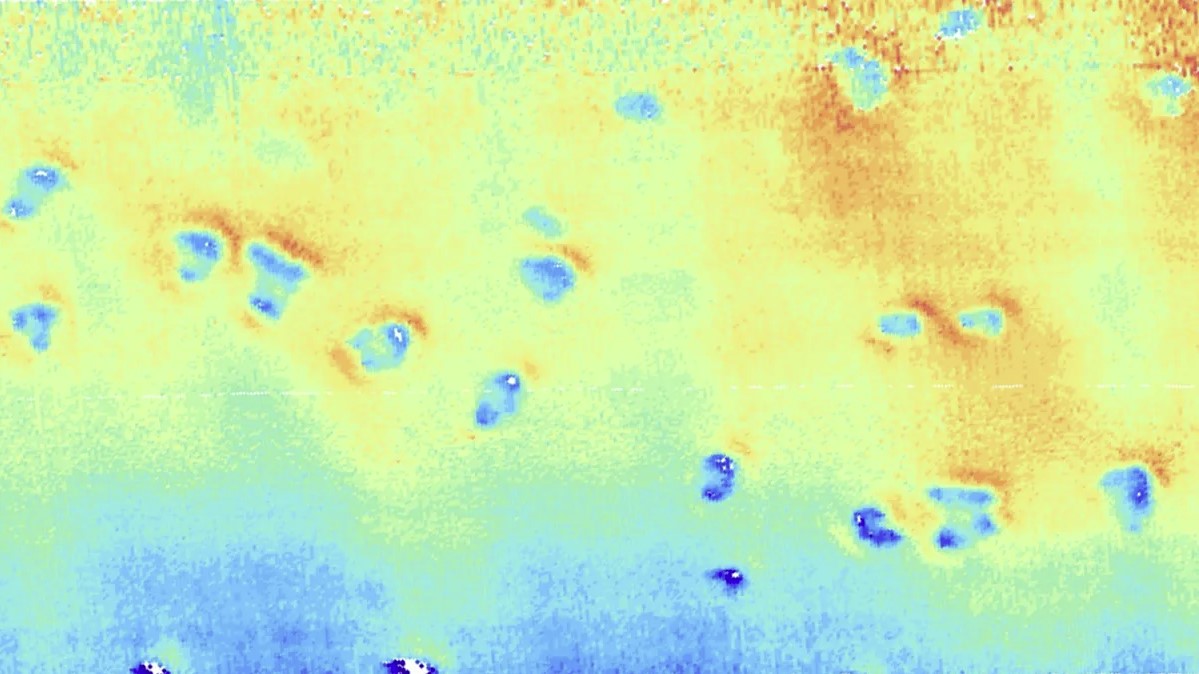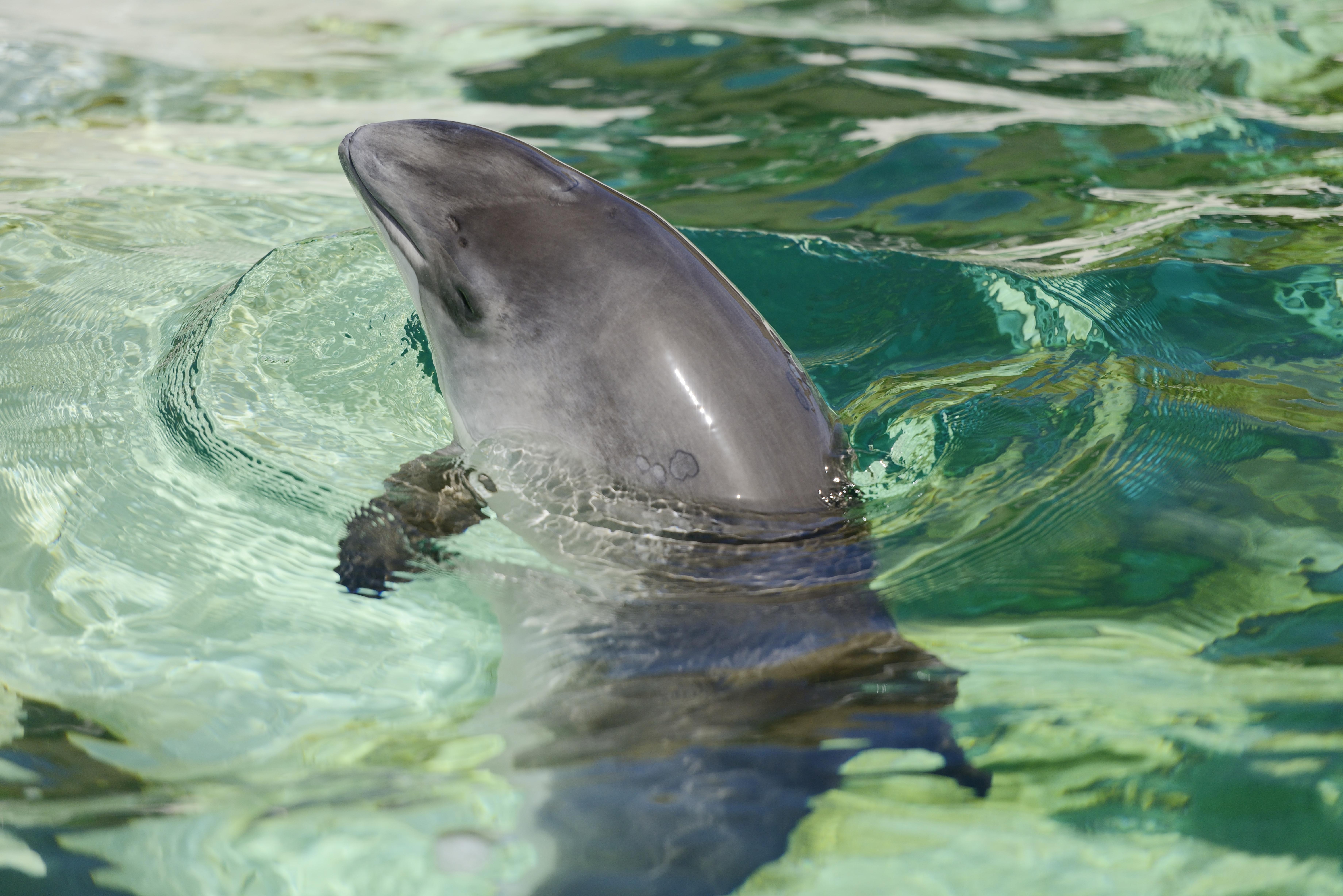Millions of mystery holes at the bottom of the North Sea are not what scientists thought they were
Holes in the seafloor off the coast of Germany looked like those associated with methane. They might actually be the work of porpoises looking for eels.

In the murky waters of the North Sea, shallow divots dot the seafloor. The pits are round or oval, and range in width from a few meters to more than 196 feet (60 meters), but are only 4.3 inches (11 centimeters) deep. Some pits appear to have merged, creating oblong Venn-diagram-shaped depressions.
Such pits usually form when fluids containing methane or other groundwater bubble out of the sediment. But new research published in Communications Earth & Environment suggests that thousands, and perhaps millions, of pits in the North Sea and elsewhere might actually be the work of foraging porpoises. The work showed that these and other megafauna may play a large role in shaping the seafloor.
For years, geoscientist Jens Schneider von Deimling of Kiel University was skeptical that the North Sea pits were made from leaking methane. The floor of the North Sea is made of porous sand and has strong currents, which aren’t conducive to methane accumulating in sediment.
"I didn't really see any mechanisms that accumulate methane," Schneider von Deimling said. Out on the water during a research cruise, he and his colleagues confirmed his suspicion. Mapping studies designed to detect methane in the sediment using a subbottom echo sounder, which is a form of sonar that bounces sound off the seafloor to image the shallow subsurface, turned up nothing. "We mined thousands of miles of data for shallow gas, and simply didn’t find that," he said.
To get a better look at the pits, the team used a multibeam echo sounder that allows for surveys of the seafloor in high resolution. Whereas older multibeam technologies can miss pits entirely, the multibeam tool allowed the researchers to scrutinize the shape of the pits down to the centimeter scale. "They had the opportunity to collect this really, really high resolution data, which is great because it means you can closely examine the structures," said Jess Hillman, a marine geoscientist at GNS Science in New Zealand who wasn't involved in the study.
The multibeam echo sounder revealed that the pits weren't, in fact, conical as would be the case if a narrow stream of methane burst through the sediment. "What makes them exceptional is that the depth doesn’t change with its aspect ratio," Schneider von Deimling said. Regardless of their width, the pits are roughly 4.3 inches deep.
Get the world’s most fascinating discoveries delivered straight to your inbox.
On the hunt for what might be creating the pits, Schneider von Deimling called up a biologist and diver friend, who told him about how harbor porpoises (Phocoena phocoena) scour the seafloor sniffing for sand eels, which earned their name because they bury themselves in the sand. After that call, Schneider von Deimling teamed up with biologists studying porpoises.
The group used existing models to predict the habitats of eels and porpoises and overlaid oceanographic data of currents. (Porpoises and sand eels both live where currents are strong.) They found that the habitats overlapped with their study area. Back on the water with the echo sounder, the researchers found that wherever they had expected to find porpoises and sand eels, they also found more pits. The bigger pits, according to the researchers, are porpoise pits that had been scoured by ocean currents.
Schneider von Deimling said he hopes someday to get photographic proof of a porpoise digging a pit, but he's not holding his breath. The waters of the North Sea are too murky to see much. "Also, the harbor porpoise is pretty shy," he said. For now, the researchers are working with scientists in Ireland to confirm that their predictions of pit locations based on porpoise habitat apply to areas outside of the North Sea.
Hillman said that interdisciplinary studies such as this are a way for geoscientists to help biologists learn more about animal behavior. Understanding how seafloor pits are formed can be important for understanding submarine hazards. Pits created by methane seepage can be a sign of tectonic hazards. Faults bring fluids and gases up from depth and are often associated with these methane vents, Hillman said. If scientists know how to recognize pits that are made by living things, they could help quell concerns about tectonic activity.
The study results suggested that large animals may have had a greater impact on shaping the seafloor and mobilizing sediment than was previously thought, Schneider von Deimling said. Because bathymetric surveys aren't performed regularly and often have low resolution, the subtle changes in the seafloor had been obscured until now. "If you think over geological timescales, the function of [animals] perturbating the sediments might be quite important," he said.
This article was originally published on Eos.org. Read the original article.
Andrew Chapman is a freelance science journalist based in Truckee, California. I write about life sciences and the environment. My work has appeared in Scientific American, Science Magazine, Eos, and Hakai Magazine, amongst others.



